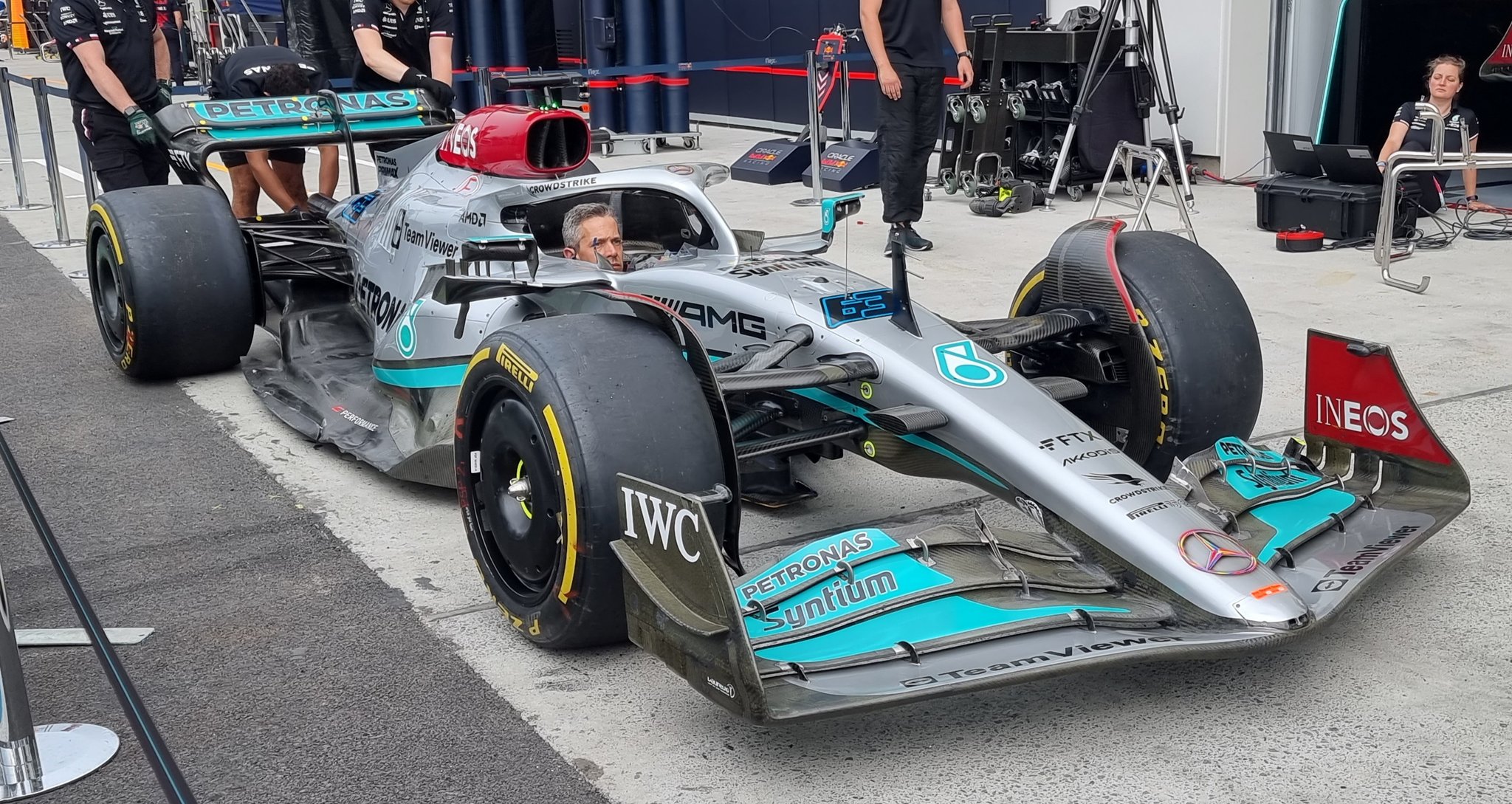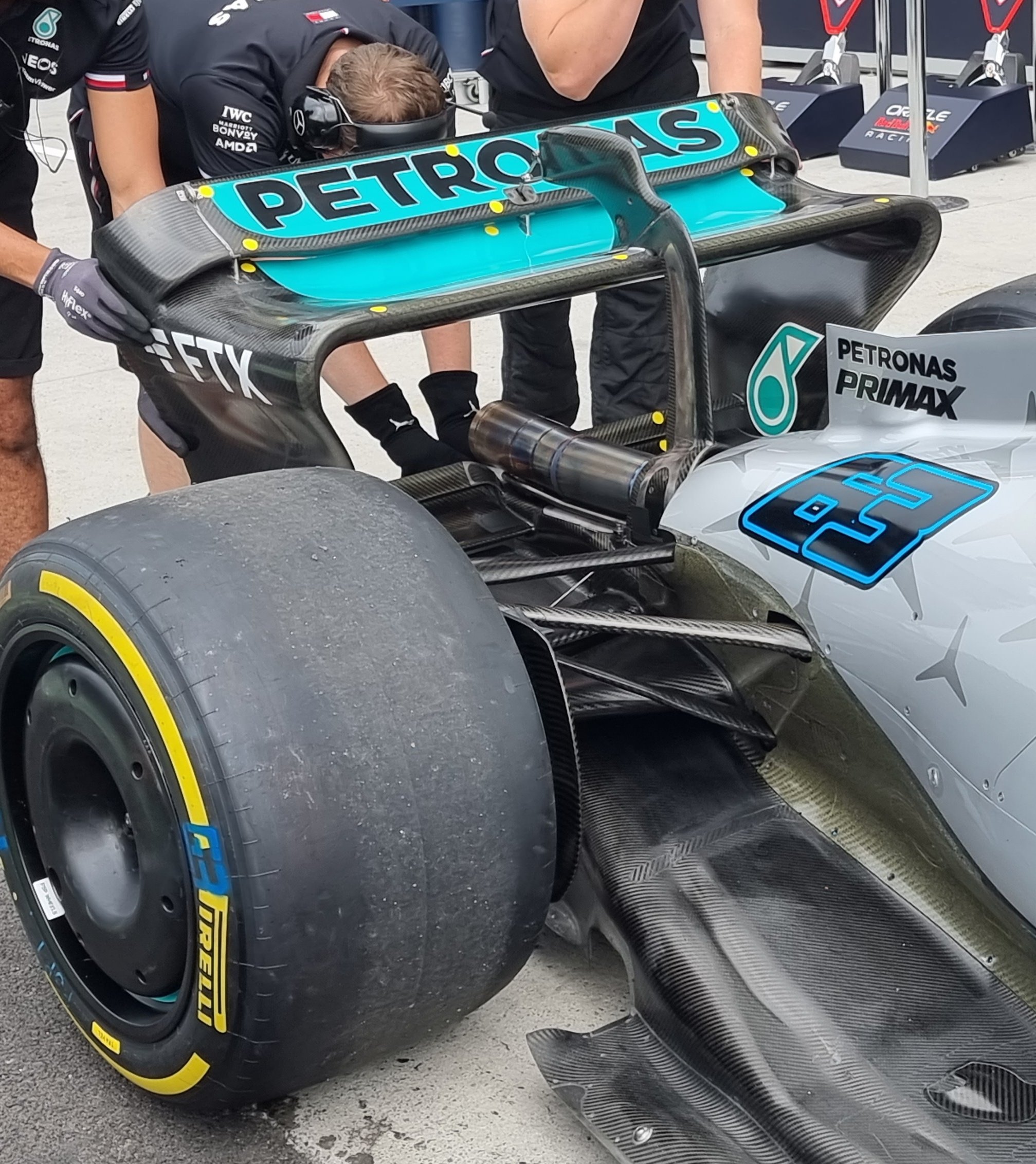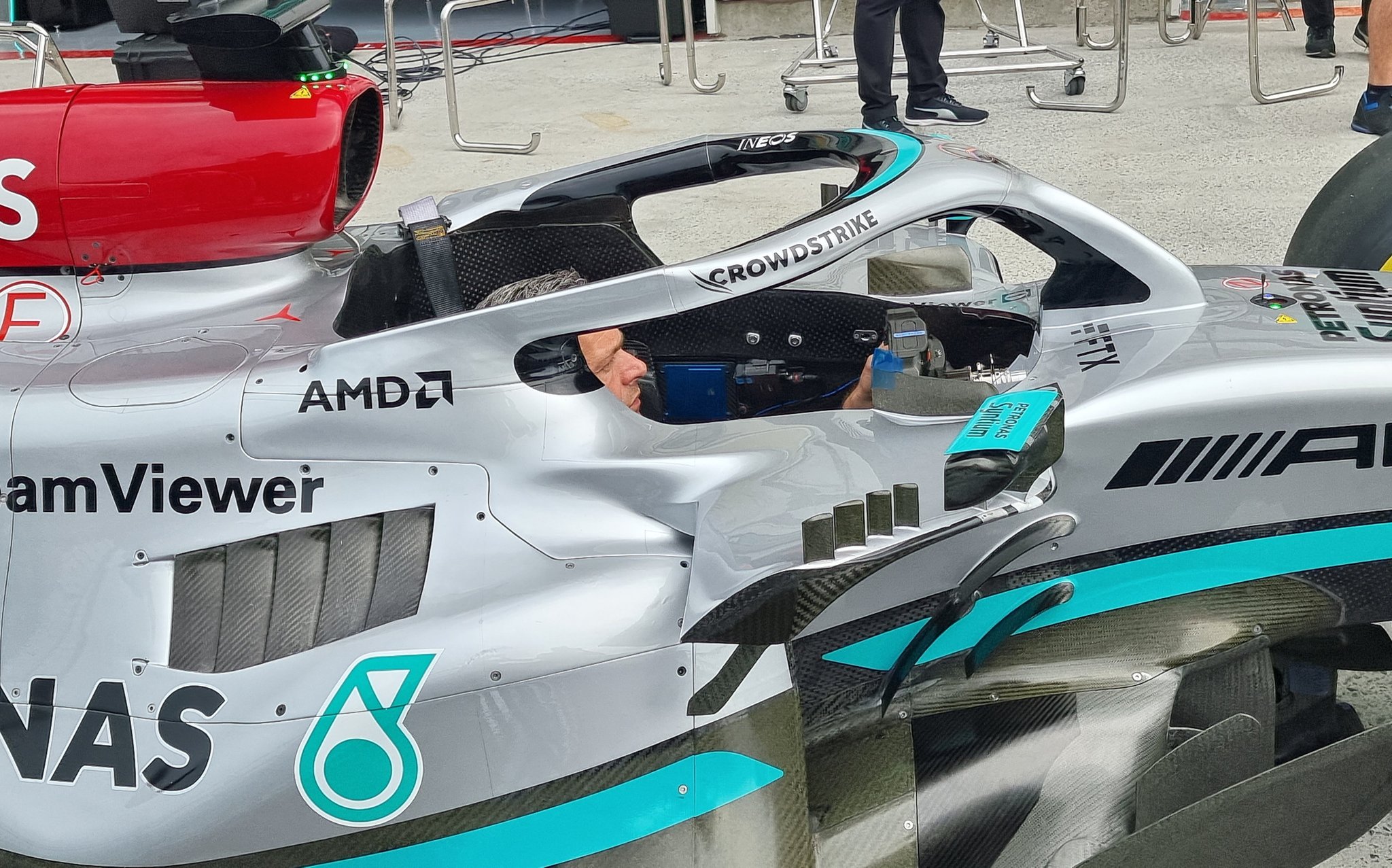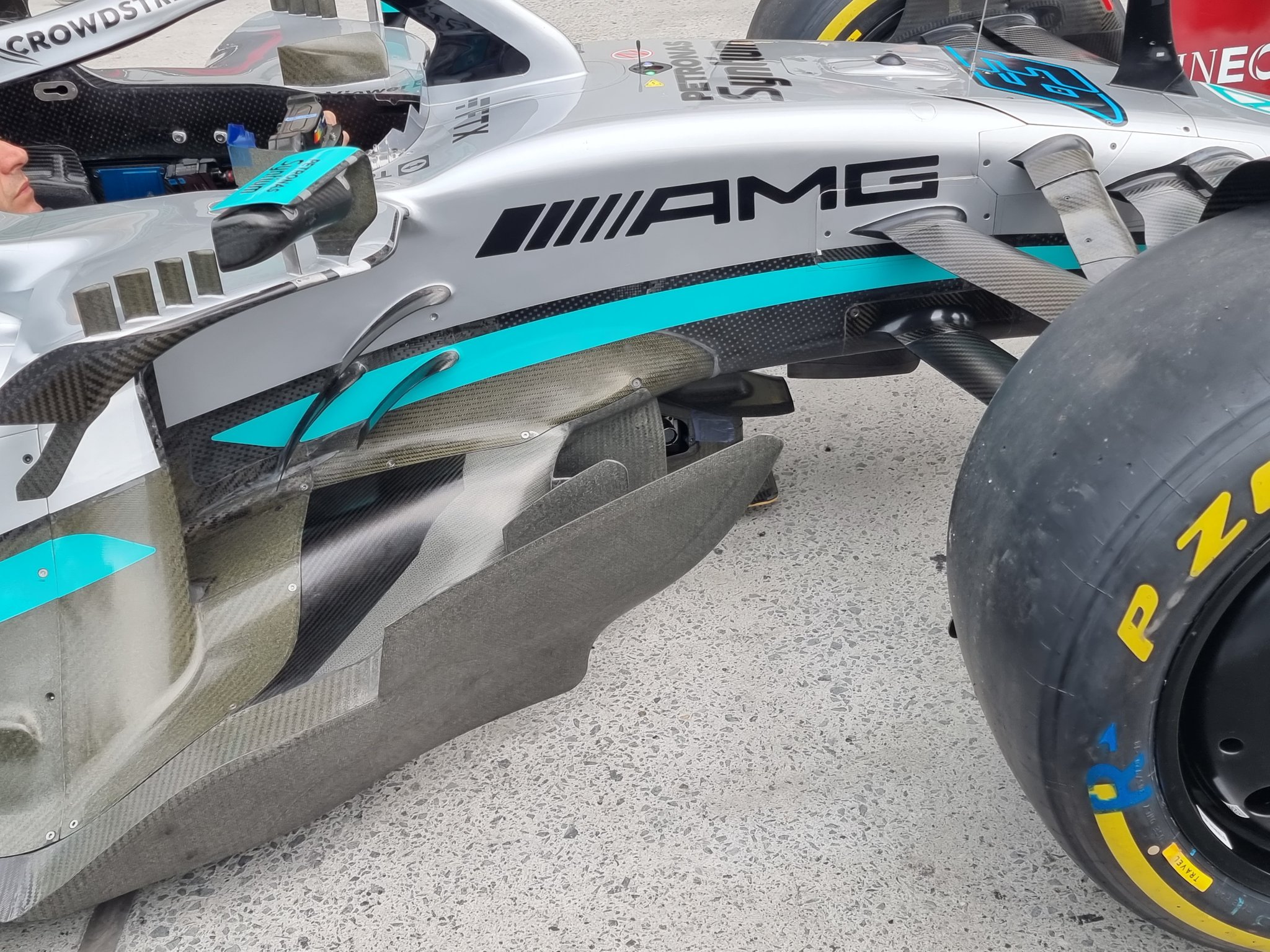Can we please focus on the W13 itself here please?
We can use Team thread for comparitive elements but this Thread is W13 - the car
Cheers
- Login or Register
No account yet? Sign up
My apologies, I thought we were talking about the car (sidepodes, floor, etc.).
Are we sure it does generate more downforce? Mercedes were the fastest team on the straight and in the high speed corners in Barcelona, when the car was working.mkay wrote: ↑16 Jun 2022, 14:30Then how come RB generates more downforce than Mercedes by running a greater ride height? They've gotten a more efficient floor? Better downforce generation coming from the body?
Not exactly. It states that it will check vertical G load and set a maximum G drivers should be subject to. Teams will have three practice sessions to figure it out before submitting data to the FIA. If the g loads are outside the mandated threshold, the teams will have to change the car set up.prox wrote: ↑16 Jun 2022, 19:38FIA have just released a technical directive indicating that if your car suffers from porpoising you'll need to increase the ride height. No porpoising then you dont have to, they intend to use the skid plank for the metric on this but as yet have not worked out the math to do it. So W13 will be slowed down.
EDIT: F1 cars might not even have/need bump stops






I agree, but at some point the rubber (its not rubber of course) will be fully deformed and any further compression will take a huge increase for a very small deflection. This can easily be miscalculated, but once the driver does a lap it will be plain if the 'plank' is hitting the ground or not, and the preset can be adjusted accordingly by a very small amount.mzivtins wrote: ↑16 Jun 2022, 21:15EDIT: F1 cars might not even have/need bump stops
Again just purely from GT3/GTE etc bump stops tend to have a curve that looks like it could go to infinity, obviously in the real world the deformation turn plastic at a point and the stop will split and be destroyed, but they are so aggressively strong.
In its absolute purest for, coil spring (red line) vs bump stop (blue line), you can see why a bump stop is actually such a great thing to have, and also why even though you would expect it to be hitting a limit, it still has more to give lol
https://s100.iracing.com/wp-content/upl ... gchart.jpg
But as others have mentioned, the tyres are there too.
I only know this from the absolute basic level, a good setup on my brother Audi R8 LMS GT3 car runs on the bump stops almost the entire time, the mclaren i have is a bit different with the front being on bump stops almost always and the rear probably half as often, and I dont know why! Thinking low corner exit traction is better with linear spring rates... who knows, im sure the bros on this forum would know exactly why haha
EDIT: Hard to find pictures of F1, but we can see F2 cars of some age runs on the bump stop at the front:
https://i.pinimg.com/originals/ec/24/5f ... e1a469.jpg
The blue curve is for a four rate spring. Or a triple rate spring + soft bump stop.

It is just a really simple chart so thats why the bump stop line looks stepped, but a multi-rate spring still wouldn't look like the blue line. A spring cannot take anywhere near the force that a bump stop can, and in GT3/GTE/LMP and most race cars springs are linear.tok-tokkie wrote: ↑17 Jun 2022, 08:59A picture of a triple rate spring.
A bump stop prevents any further deflection so its blue line rises vertically. Because they are usually a cone of rubber there is a small amount of deflection so, in fact, the blue line is slightly sloped to the right.
Looking at the url for the chart I see it is from s100.iracing.com who label it as "bumpstop-springchart". I disagree with them.

Hmm I wonder where I have seen some of these designs before?